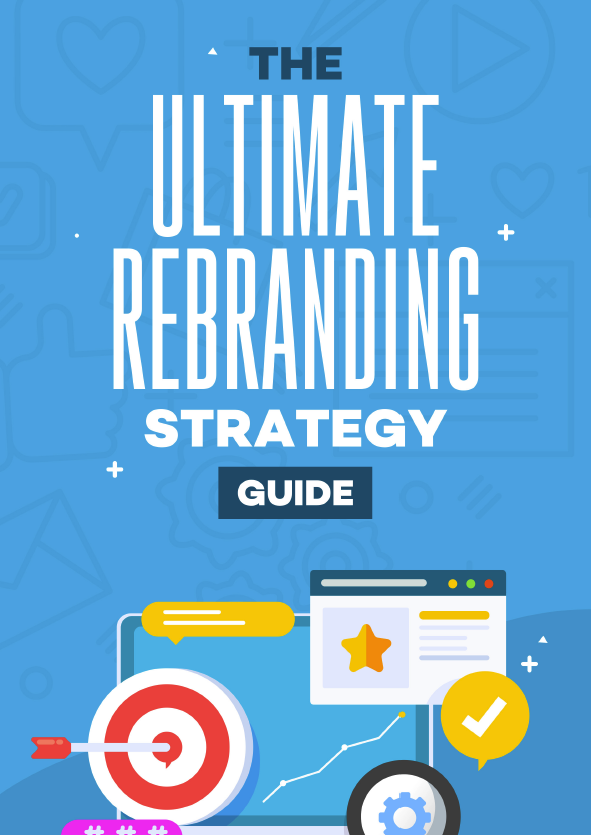First, there were cameras.
Then, there were phones with cameras in them.
And then there was the next evolution: ![]() Snapchat Spectacles
Snapchat Spectacles ![]()
Except not really.
Because, most likely, you had no idea these things existed until five seconds ago when I just mentioned them.
Back in 2016, the social media app Snapchat launched brand new, fancy schmancy sunglasses that took photos and videos and posted them to users’ Snap stories. Glasses with a camera? Like some kind of super spy? How could that fail?
Well, it did.
But why?
Because Snapchat failed to understand its intended audience.
Spectacles were sold in special vending machines, called Snapbots, with a high price tag of $130, making them hard to find and hard to afford. On top of that, they were super nerdy-looking with their absolutely not-at-all-subtle (and maybe even creepy) camera lenses.
Snapchat made a high-tech, niche product, believing it would be the next “cool” thing for young adults.
However, over 50% of Snapchat’s users at the time were under the age of 24. Asking college students and teenagers to shell out that kind of money on silly-looking glasses is a lot, especially for a product that’s so specialized. They seemed more like a gimmick than a tech innovation.
When you market, take Snapchat’s Spectacles as an example of what not to do, and get to know your intended audience!
What Does “Intended Audience” Mean?
Audience is an essential part of marketing. After all, you are selling your product or service to people. But, with every service or product, there’s a select group of people who are most interested in it and therefore most likely to buy it.
Your “intended audience” is the specific group of people you sell products and services to.
Target audience vs target market
Same thing, right?
Nope.
These terms might sound like they could be used interchangeably, but they mean two different things:
Target Market: the broad, general group of people you are marketing towards.
Intended (or Target) Audience: the specific clump within the target market you expect will buy your product.
Think back to the olden days when people really did buy goods from marketplace stalls.
Say a wool merchant (stay with me here) is going to a textile market to sell all different kinds of, well, wool.
The merchant’s target market would be people coming to this market to buy all sorts of fabrics and products.
The merchant’s intended audience would be people at the market who want to purchase wool and are interested in spun wool, dyed wool, etc – i.e., the people most likely to buy from her stall.
Your intended audience is a narrowed-down, focused version of your target market who you expect will be interested in your product or service.
Why You SHOULD NOT Cast a Wide Net
With the amazingly relevant wool merchant example in mind, you may think –
“I’m gonna focus on selling wool to ALL marketplace goers – the more customers I please, the more products I sell. Right?”
Wrong.
I hate to break it to you, but not everyone wants to buy wool – some don’t like scratchy fabric, others are allergic, and some have severe Ovinaphobia…look it up 🙂
If you focus on trying to sell to the masses, you end up watering down your marketing strategies. Not only does general-sounding copy fail to entice people who were never going to buy from you in the first place, it also turns off the people who DO want to buy from you!
But – there exists a super passionate, wool-adoring crowd who would love to buy from you if they knew you were selling.
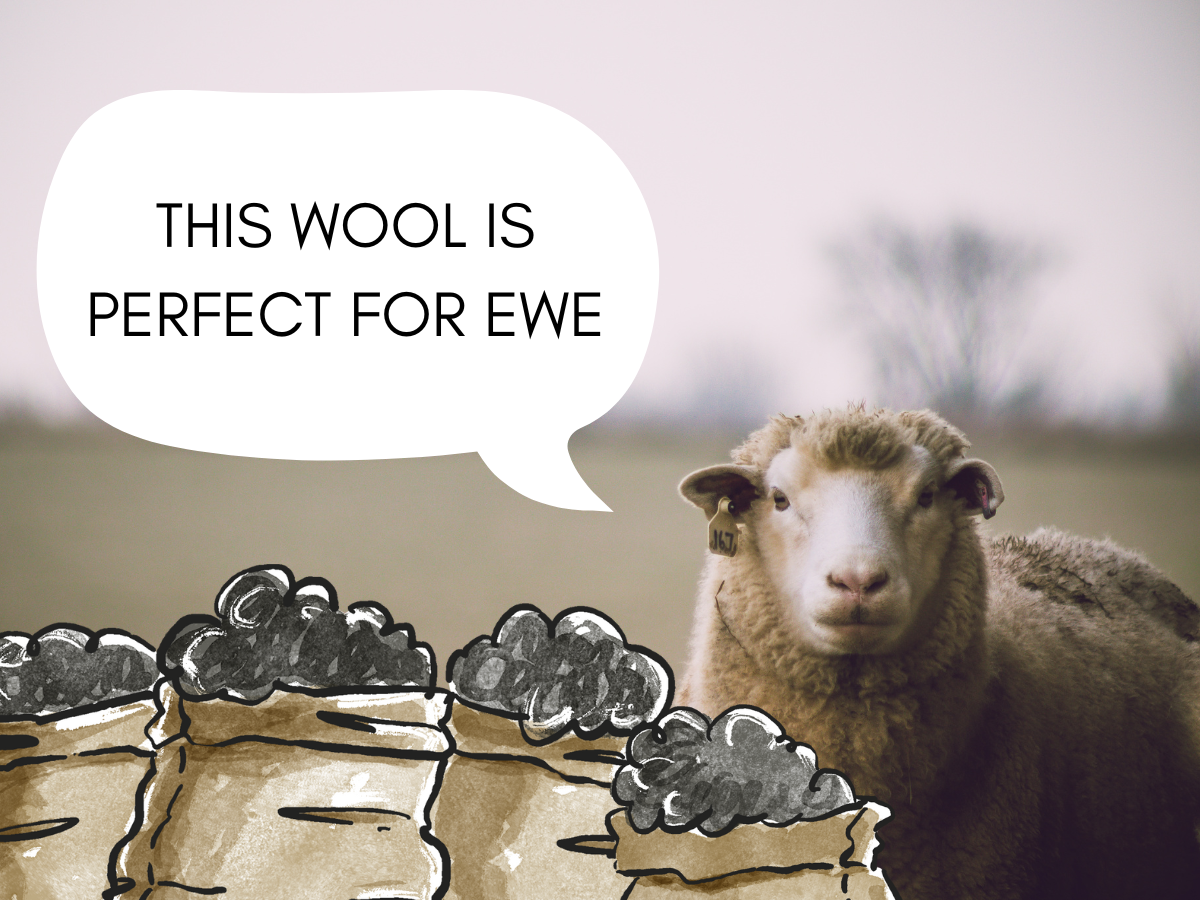
These folks, my friend, are your intended audience.
Targeting does not limit you -> it optimizes your capacity to sell.
How? Think of it this way. You can either:
- Run yourself ragged by marketing in a way that pleases everyone (and by that I mean no one).
-OR-
- Wisely market towards folks who are most likely to buy from you, and watch your conversion rates go through the roof.
Why You Need To Know Your Intended Audience
There are three reasons why knowing your intended audience is super important.
You’ll be able to….
1. Create Hyper-Personal Marketing Strategies
Personalized marketing strategies mean using results from consumer data to adapt your marketing strategies to individual consumers’ interests.
Basically, when someone in your intended audience sees your copy, they should think “Wow! This was written just for me – it’s amazing they know exactly what I want.”
Not only do personalized marketing strategies improve your customers’ experience, they also increase the likelihood of those customers returning, which ultimately is going to raise revenue.
To create personal messages, you NEED to know your customers at a personal level.
2. Improve Product Development
Knowing who you’re selling your product to helps you sell more + better products.
Your audience is handing out gold – but you have to know who they are to get it.
Listen to feedback in reviews and surveys – what do people find annoying, wish was different, or can’t get enough of?
Your audience will tell you exactly what you should make or how you should modify what you’ve got to satisfy their needs.
When you satisfy your audience, they’ll be delighted to buy from you, offer up great reviews, and keep coming back.
3. Write Better Copy, Content, and Advertising
Gone are the days of wondering how to advertise – once you know your audience, you’ll have better-informed copy, content, and advertising.
Who’s in My Intended Audience?
Strategies to use to get you ready
If you’re not yet sure how to identify your intended audience…
Here are questions to narrow it down:
- Who’s buying?
Consider your product and think of what group of people would be most likely to buy from you.
For example, if you ran an outfitter store, the group most likely to buy would be outdoor enthusiasts. Or, if you operated a tech consulting business, your most likely audience would be business owners who aren’t tech-savvy or don’t have the time.
Imagining the most likely customer group helps solidify an image of your audience.
- Who’s benefiting?
There’s a reason you created your product or service – you spotted a need, so you created your thing to fix that need.
What was the need? Don’t think generally, like “to save time” or “to save money.” Those are things we all could use. Be specific.
Thinking of who benefits from your product leads you in the direction of finding your target audience.
- What’s the competition doing?
There’s this great thing called the Internet where you can Google your competitors and see their marketing strategies – for free!
Look at who your competitors are marketing towards – is it young professionals, retired folks, working moms, etc?
Who they market towards is a huge indicator of who’s in your intended audience.
Companies That Get It
Brand: Factor
Intended Audience: Busy people who want convenient, healthy food that tastes good.
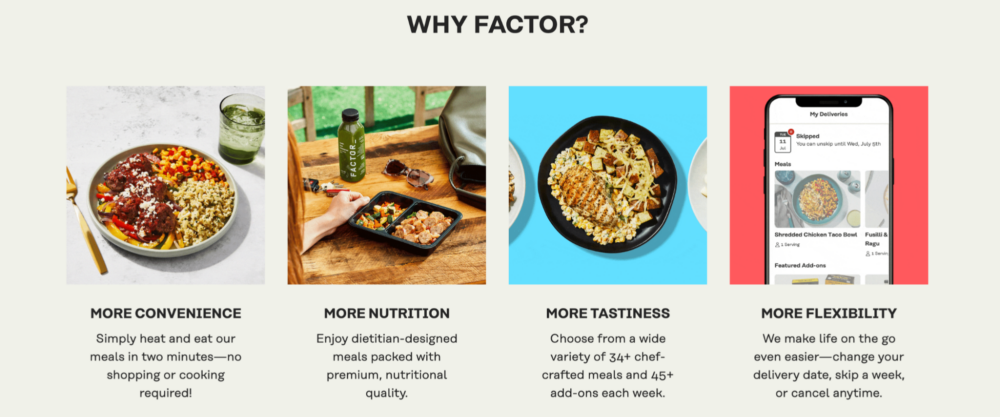
Factor does a great job of knowing its audience – busy people who want to eat healthily. Often, folks think “eating healthy” is time-consuming and means eating boring baked chicken and broccoli.
Factor hears the complaints of its intended audience. They offer meals delivered to your door, take “two minutes” to cook, and are designed by dieticians and chefs to ensure their customers can look after their health without sacrificing time and taste.
Brand: Helly Hansen
Intended Audience: Outdoor enthusiasts – especially skiers, hikers, and sailors
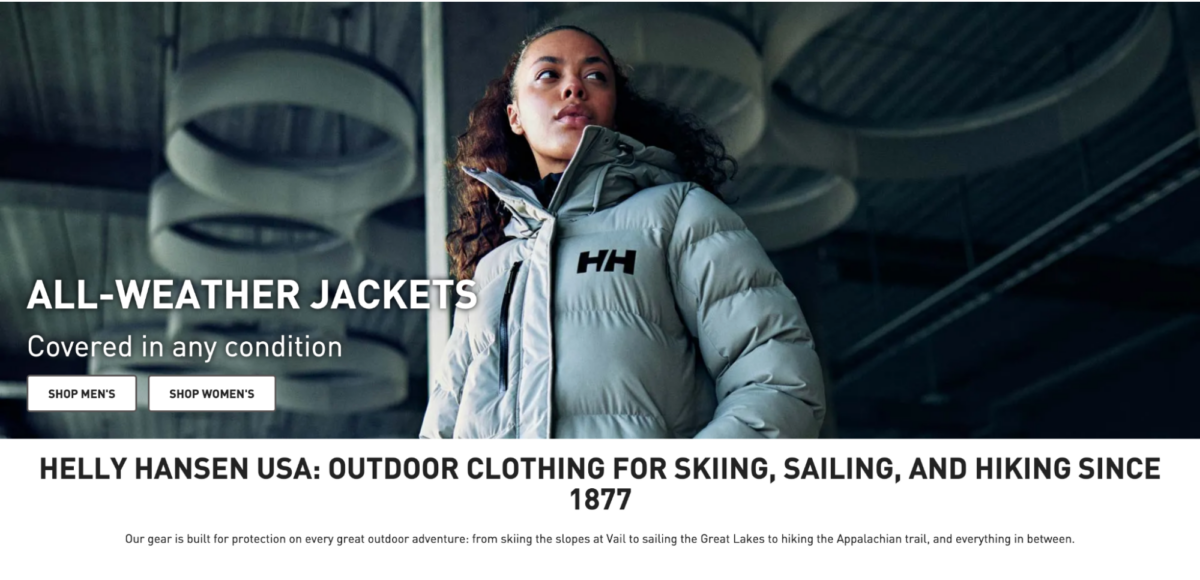
Helly Hansen’s strategy is simple – so simple, in fact, they actually spell out their intended audience – people who enjoy “skiing, sailing, and hiking”.
And, the company knows those folks want gear that will last. The fact that the company has been around for nearly 150 years (“Since 1877”) points to the company’s reliability.
Brand: ASICS
Intended Audience: Serious runners (or aspiring serious runners) wanting race-worthy gear.
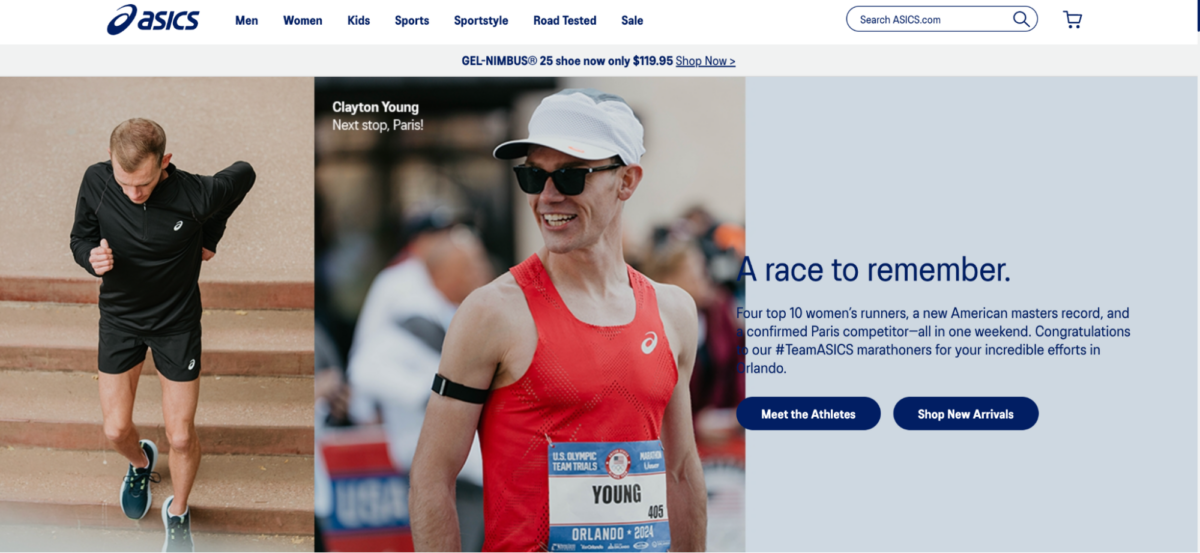
ASICS knows its customers are those who love running and want the best gear. This website banner shows off the company’s professional running team’s success, which entices its audience.
After all, who wouldn’t want to buy the same shoes as professional athletes?!
Knowing Your Audience
Once you have a general idea of your intended audience, it’s time to get to know them.
To get more personal with your audience, do customer research, create a customer profile, and know which platforms they use most.
Customer Research
Research… yawn.
Hang on – this isn’t your typical academic research of sifting through lifeless studies.
This is your golden opportunity to get familiar with your future customers, AND it’s really easy.
Use what people say to inform how you market to them.
How to do customer research:
1. Dig for Gold (Review Mining)
Research similar products and services to yours, and go to customer reviews, using Google, Amazon, or company’s websites.
Dig through these reviews – the good, the bad, and the ugly. Take note of common complaints, praises, and suggestions.
Pay attention to the language used in these reviews – use customers’ own words in your copy to show you ‘get it’.
2. Become a Spy (Online Forums)
Yes, you have (conditional!) permission to snoop around.
Online forums offer a place for people to talk about services and products – the perfect excuse to eavesdrop on these conversations. What do people have to say?
Check Out…
3. Give Customers the Mic (Polls + Surveys)
Make a short poll using an online poll generator, such as SurveyMonkey.
Send it out through email or in a website pop-up … just make sure it reaches your intended audience, not the general public.
Ask your audience about themselves, how they heard about you, what interests them about your services, etc.
4. Create a Customer Profile
What’s a customer profile, you ask?
By using patterns from customer data, you can create an archetypal customer based on demographics, such as…
- Age
- Gender
- Education level
- Lifestyle
When you create a customer profile, you can visualize who buys from you. It’s much easier to sell to a person than to a blob of people.
Boil it down to one person, know what gets them excited, and sell, baby, sell.
5. Know Which Platforms Your Audience Uses
Your time is precious – don’t waste it!
Imagine pouring all your time into creating stellar, compelling copy just to post it on platforms your intended audience never uses.
Talk about yelling to the void.
Know which platforms your potential customers use and advertise on them (find this out by utilizing the research tactics above).
Get familiar with your audience’s platforms. Make it easy for the people who need your product the most to see what you’ve got!
Write Better Copy by Understanding Your Intended Audience
By now you probably understand how important it is to determine who is most likely to buy your product or service and get specific details on them. But how exactly does this help your business?
Personalization Converts Better
Think of all the ad emails sitting in your inbox, right now. There are probably tons, many from websites you only visited once.
Now, think of those attention-catching emails you’ve gotten.
You know the company probably sent out the same email to hundreds or thousands of folks, but for some reason it feels like it was written just for you.
When you’re familiar with your target audience, you’ll make personal copy with higher conversion rates.
Making purchases is just as (if not more!) an emotional decision as logical. Humans want to feel connected to companies and like our money is in safe hands.
- Rule of Thumb: The more individual you can make your copy, the more your audience feels a connection, buys from you, and keeps coming back.
Precisely Pick Pain Points
Pain points are the sticky, aggravating, unrelenting problems your intended audience has.
What problems could your product or service solve? What would prevent people from buying it?
Remember our Factor example? They know “healthy meals take too much time” is a common complaint and they offer a solution: healthy meals you can prepare in minutes.
They also advertise that they offer a variety of options and promise that their meals prioritize taste in addition to health. It’s likely they found that monotony in meal kits and healthy options tasting bad were common criticisms of similar products in their research.
Find pain points that are specific, ones that really frustrate your potential buyers on a visceral level. Minor, general problems (“not enough time” for example), won’t entice customers. You have to do the research to get to the heart of why they would (or wouldn’t) purchase from you so you can address them head-on.
Remember: It’s not about you.
Folks aren’t interested in hearing how great your company is, they’re interested in what you can do for them.
That means your task is helping your audience see how their purchase will improve their lives in some way whether it’s unlocking a better version of themselves, making life more convenient for them, or simply making them happier.
Yes, there are people who care about what sort of company they’re buying from, whether they want proof of quality, ethical business practices, etc. That’s still about them getting the assurance that they’re spending money the way they want to.
Wrapping Up
Marketing your product or service without a clear understanding of who it’s intended for is a waste of time and opportunity.
By identifying your intended audience and tailoring your marketing strategies to their needs and preferences, you can create hyper-personalized messages that connect on a deep level.
Remember – knowing your audience isn’t just about selling a product, it’s about establishing a relationship with loyal, supportive customers.
Business will boom if you take the time to know your clientele!
Want more insider tips on how to Are you launching a business and not sure where else to start? Check out Leverage’s resources page for more helpful tips.

